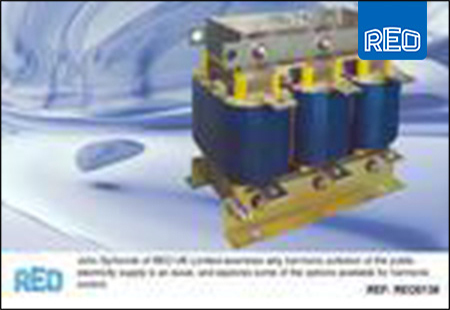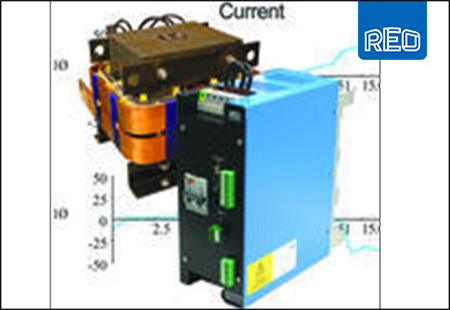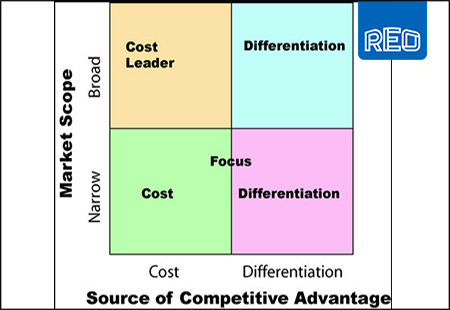Taming Harmonics
Minimising harmonic pollution of the public electricity supply is an issue, which, with good reason, is being given more and more attention. John Symonds of REO UK Limited examines why harmonics are an issue, and explores some of the options available for harmonic control.
The Network Operating Companies (NOCs) that deliver electrical power to homes and businesses in the UK can now refuse to connect loads with poor harmonic performance. This may seem like overkill, but only a very brief analysis is needed to demonstrate that the NOCs’ approval of planning figures is, in fact, an appropriate response to a serious problem.
It is important, first of all, to note that the use of equipment with potential for producing harmonic pollution is growing rapidly. Paradoxically, the main driving force behind this growth is the need to minimise another sort of pollution – environmental pollution – by enhancing energy efficiency.
This is leading to the replacement of traditional equipment, like linear power supplies and fixed-speed motor starters, by modern electronic equivalents such as switch-mode power supplies and variable speed drives. The modern items are certainly more energy-efficient, but they also generate higher levels of harmonics.
And, harmonics do matter. They cause, for example, additional heating in transformers, which means that the NOCs have to install larger, more expensive plant than would otherwise be needed. Triplen harmonics – the 3rd, 9th, 15th, etc. – that are produced by some types of single-phase load, are a particular problem because they add rather than cancel in neutral conductors and produce additional cable heating.
Harmonics can also cause unexpected operation of protective devices such as fuses, vibration in motors that leads to premature bearing failure, and a whole range of other damaging effects. In short, they present a serious problem that needs to be tackled.
To assist with this, the Engineering Association has issued Engineering Recommendation G5/4, the aim of which is to ensure that the levels of harmonics in the public electricity supply do not constitute a problem for users of that supply. There are a number of measures that can help in achieving compliance with G5/4.
The first is to select equipment that has been designed to generate only low levels of harmonics. Much modern equipment falls into this category, but clearly this approach is irrelevant when considering existing equipment.
One alternative, which can cover a complete plant, is the use of phase-shifting transformers. These are usually fitted at the point of common coupling; that is, the point where the supply enters the building or plant.
These transformers work by, in effect, converting low-order harmonics to higher-order harmonics, which reduces the distortion of the supply waveform and, therefore, the impact of the harmonic currents. Phase-shifting transformers are, however, expensive, and their performance is very much influenced by the type of load and other factors.
An increasingly popular solution for harmonic control is active power factor correction (APFC). Here, the supply current is monitored in real time using electronic digital signal processing techniques that accurately evaluate the harmonics present. The APFC system then generates its own harmonics, which exactly cancel those originally present, and injects these back into the supply.
While effective, this approach is not without its limitations. Problems can arise, for example, when APFC is used with a three-phase supply that is also supplying single-phase loads. Since the types and levels of harmonics generated by single- and three-phase loads are different, the APFC system may minimise the harmonics in the three-phase supply while actually increasing those in the single-phase supply.
Also, APFC is expensive, and it is often difficult to justify fitting an APFC system to cater for a complete site or installation, particularly if some of the loads are modern products that already incorporate their own harmonic reduction measures.
In such cases, a better and more economical approach is to identify those loads that produce significant levels of harmonics, and to fit them individually with passive filters.
The key components of these filters are line reactors, which smooth out the waveform of the current drawn by electronic devices that have non-linear input stages. The level of harmonics is significantly reduced and, provided that the reactors are correctly selected, the effect on the performance of the devices to which the filters are fitted is negligible.
Uncontrolled, harmonics are a big problem. The design of recent items of electrical and electronic equipment usually takes this fully into account, and its harmonic performance is good. In most installations, however, these new products are used alongside older equipment with less satisfactory harmonic characteristics.
While providing harmonic-reduction measures for the whole installation may address this problem, the costs are high. The alternative of fitting passive filters to only those loads that need them provides a solution that is equally effective and much more affordable.













